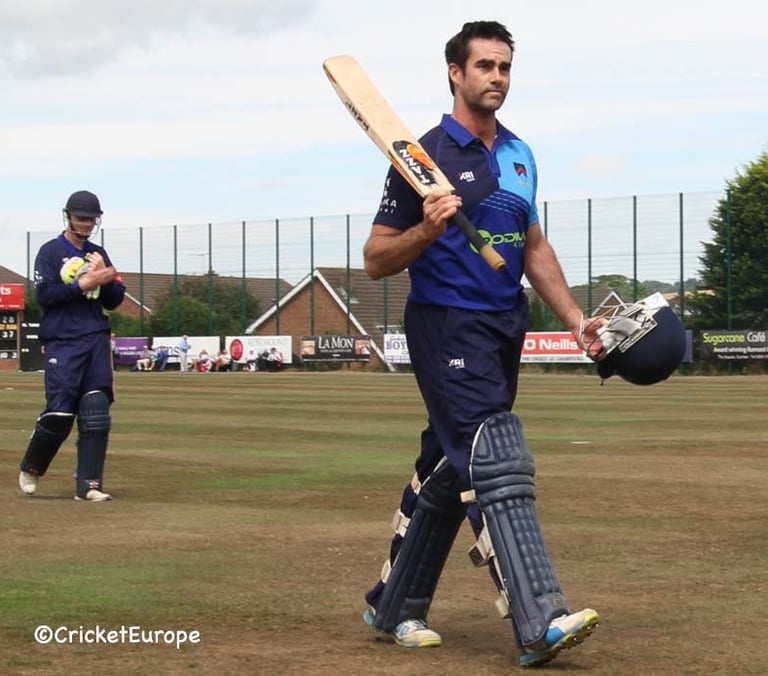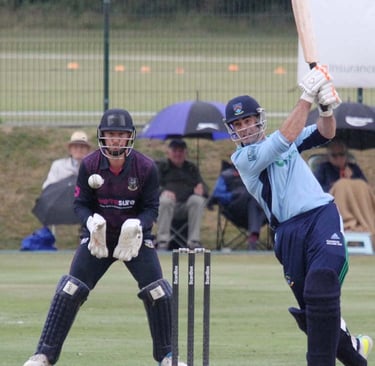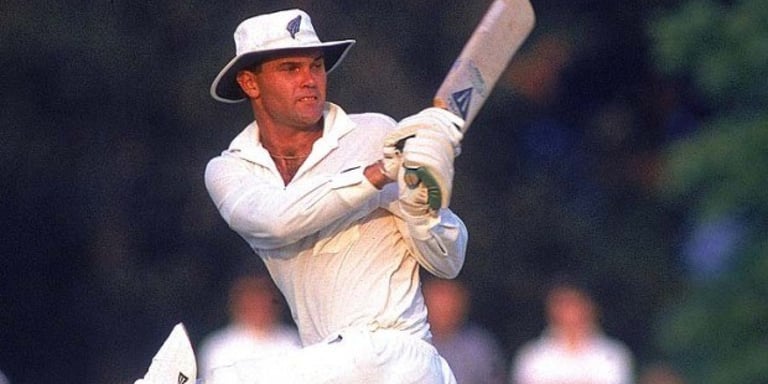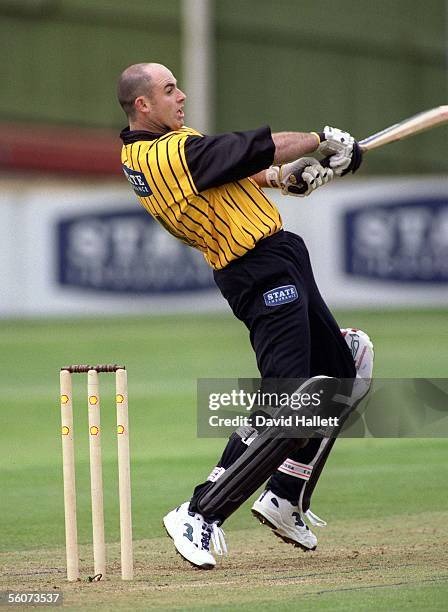How visualisation will take you to the next level
It’s taken me the guts of 20 years to find a formula that works. I’ve taken the time to write about it so you don’t have to search any further. Alongside all of the physical practice, visualisation can give your confidence the level of consistency it needs to take your batting to the next level.
Marc Ellison
12/15/20248 min read


There have been times when my confidence with the bat has hit rock bottom.
One exercise in particular has pulled me out.
Visualisation.
So, what is it?
“Visualisation in sport, also known as mental imagery or mental rehearsal, is a powerful technique used by athletes to create a detailed mental image of themselves successfully executing their desired performance. It involves engaging all senses to make the experience as vivid and real as possible.”
Athletes have done it for years.
Visualising races panning out in the way they want to.
Psychologists have long understood that you can cultivate confidence simply by behaving as if you already have it.
Shadow batting between deliveries or striding to the crease with purpose can positively impact your performance.
Another way of "faking" confidence is to visualise the way you want to play in your mind's eye before the game begins.
There’s a great piece written by Tim Wigmore on the topic. Here’s an excerpt recalling one of the best innings in test history:
'When stumps were called, Lara had a chat with Rudi Webster, West Indies' mental-skills coach. In his book, Think Like A Champion, Webster recalls:
'"My advice to him was to imagine the game as already won and to visualise and feel himself constructing that victory. I asked him to mentally rehearse seeing the ball the moment it leaves the bowler's hand and to feel his movements as he gets into position smoothly and quickly to stroke the ball into the gaps in the field. I also asked him to see and feel himself playing his natural game, facing one ball at a time, and enjoying the challenge."
'The following day, Lara played one of the greatest innings of all time. In the euphoria after his 153 not out, Lara told Webster: "I was seeing the ball so clearly that I couldn't miss it. Everything worked out the way I imagined it."
Fast forward to 2022, and, ahead of the Challenge Cup Final, I visualised with as much energy and vibrance as ever before, hoping to repeat my feat of a Cup Final hundred four years previous (only hoping to change the result).
I embarked on a structured six-week training programme that included visualisation 4-5 times a week. The extra space made the process so much easier and more enjoyable!
In the final, in bowler-friendly conditions, I struck a sweetly timed run-a-ball 30 but made a technical error to get out softly and we lost by 10 wickets!
Once again, it’s not a perfect formula but it’s pretty bloody close.
On this particular occasion, I felt hard done by. I thought it was a sure thing. Do the work in the lead up and the result will take care of itself. Surely!?
Not quite. There are many variables at play. And, while the pull shot was a strength in my arsenal in previous seasons, I wasn’t training at a high enough intensity to give myself the best chance of executing the shot against their pro and he was too good for me on the day. Another lesson learned.
The 2024 season was one where I used visualisation consistently across the five-month campaign and experienced one of the best seasons on my career: 697 runs in 17 innings at an average of 53.
Never have I felt such a level of consistent confidence throughout the entire duration of the season. While some of that has to be attributed to the stage in my career that I’m at and the number of innings I have under my belt, you just can’t beat positive mental imagery when it comes to building and maintaining confidence.
My visualisation process evolved in 2024. It included video analysis for the first time. I’ve written about it here.
The key difference for me between batting when I haven't visualised and when I have is that I find my rhythm a lot quicker. Obviously, one of the key variables in club cricket is the pitches we play on - green seamer one week, low slow one the next, followed by a rank turner. Often these conditions can take 10-plus overs to get accustomed to.
However, this just isn't the case when I've been visualising. It's as if I'm simply resuming my innings from when I last finished visualising. I get off the mark quickly and usually score a boundary in my first 6-10 balls.
It’s taken me the guts of 20 years to find a formula that works.
I’ve taken the time to write about it so you don’t have to search any further for a process to help you along the road to consistent success.
Give it a try.
What’s the worst that could happen?
I’d love to hear how you get on.




Kiwi great Martin Crowe spoke at length about visualisation.
“Once, in 1994, I was in bed for three weeks with flu and all I did was visualise. When I went out to bat after that I was in the zone!”
As I understand it, that period of visualisation came before his memorable 142 in a test match at Lord’s where he hobbled between the wickets on one leg. The dodgy knee that would prematurely end his career giving him plenty of gyp.
That brings me to how I began experimenting with mental imagery.
I was 19 and preparing for the National Under 19 tournament and hadn’t scored a fifty for about 18 months.
After some feedback from the best coach I’ve ever had, Mike Shrimpton, I decided that I need to try something different to get out of the slump I was in.
I was packing offal at the meat works in between the end of the university year and the start of the tournament, which provided the perfect kind of mindless work to switch off to and harness the mind to focus on positive performances from the past and try to relive the feeling of those days.
As it panned out, those hours I spent letting my mind wander off to far more enjoyable experiences than the scene of blood all over my hands and overalls paid off. I scored 400 runs at an average of 100 at the national tournament and was selected to captain my country at the 2006 Under 19 World Cup.
Confidence is something that’s brought out the best and worst in me.
When I believed in myself, I would go on streaks of five to eight innings averaging 100 and then it would eventually fade. At other stages, I could go through an entire season without registering a half-century.
There were times when I thought I’d lost the ability to make big scores.
During my time at the University of Otago, I was put in touch with a sport psychologist. We met to talk through the fluctuations I was experiencing with my confidence. I shared that when my confidence was high, I was a top player, but when my confidence plummeted, I was woeful.
She suggested I tried writing a journal of innings I wanted to play in the future. The key part of our conversation that allowed me to understand the potential benefits of investing the time in visualisation was this:
Emotions, more importantly, your confidence, is associated with the subconscious part of the brain. The subconscious part of the brain responds to the images it sees. The subconscious cannot differentiate between real or imagined. All images are taken as legitimate.
Therefore, get creative with your imagery and you can positively impact the emotions generated from those images and your confidence will improve as a result.
I started off energetically. However, not long into each of my three imagined innings, I got writer’s cramp, lost rhythm and the enjoyment for it. It took too long to write! I gave up.
My performances ebbed and flowed as usual. At my best, I was as good as anyone in the country my age, but at my worst, I might as well have been a beginner.
A couple of years later, I started asking members of my cricket community if they knew a sports psychologist. I was put in touch with former Black Cap Richard Petrie. He suggested visualising peak performance against my upcoming opposition and even picturing myself wearing the Black Cap.
I tried this out, but my mind was so negative that I would often picture myself nicking the ball and being caught behind. It felt pointless and I gave up. That season I averaged 20.
A year later, I was still averaging 20 and something needed to change. After all, wasn’t it Einstein who said the definition of insanity is doing the same thing over and over again and expecting different results?
I reached out to ‘Peaches’ again and told him why I gave up on his initial suggestion. He thought about it for a bit and then recommended I gain control of the images in my mind by commentating an innings of myself. Picturing myself from behind and above my head, a kind of bird’s eye view.
At the time, the commute to training took 30 mins to get there and 30 mins to get home. So on Tuesdays and Thursdays, I spent every minute of that commute commentating innings, performing well and scoring hundreds against my upcoming opponents. Picture it. How embarrassing eh? But I doubled down!
During the rest of the season, I scored two hundreds, averaged 70, including scoring 87 and 40 in the Pearce Cup final as we beat Eastern Suburbs and claimed our first title in 30 years.
A few years later, again, I was a little light on runs. Playing for Auckland University, we were chasing more than 300 on the second day of a match against Cornwall. It was a week between the first and second day and in between I had a six-hour round-trip in the car to complete.
Instead of listening to music the whole time, I thought I’d switch it off and visualise performing well on the weekend ahead. I imagined all of the opposition bowlers running in and bowling to me and my responses. Like before, in order to control my imagination, I commentated the innings and finished unbeaten on more than a hundred.
That weekend, I made 88 and we fell short by around 40 runs. It’s not a perfect formula, but it’s pretty damn close!
I moved back to Belfast, Northern Ireland in 2017 and the following three years I was involved with the Northern Knights. In the interest of leaving no stone unturned, I once again looked to visualisation to try and gain an edge. While my performance across those three years was strong, I didn’t gain any real benefit from visualisation. I couldn’t quite work out why.
Carving out a hospitable environment for visualisation is key. If you're looking to shadow bat as you visualise, you're going to need a decent amount of space both above you and surrounding you to swing the bat properly. I didn't have this until we moved house in the winter of 2021-22. So, all my efforts were restricted.


